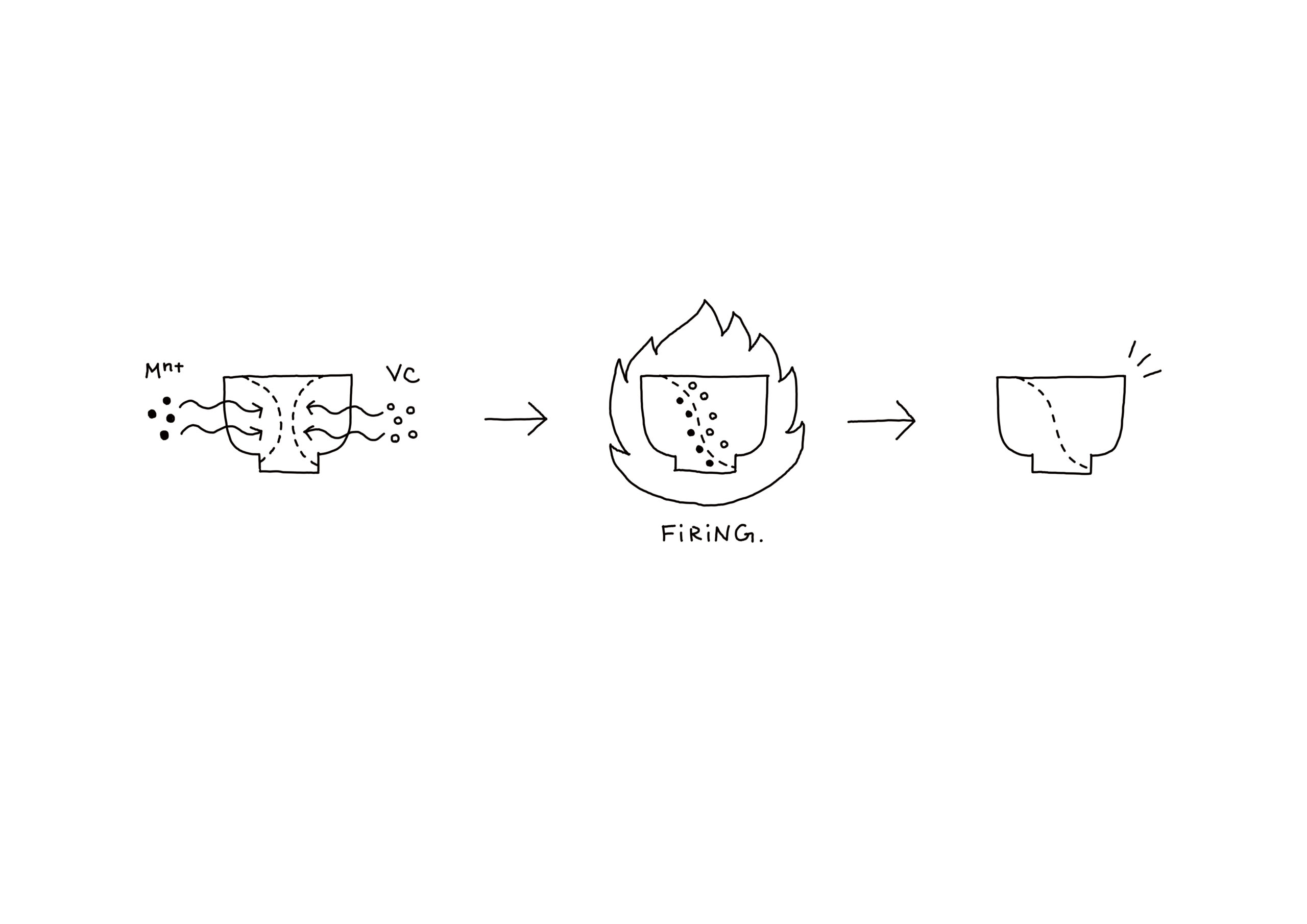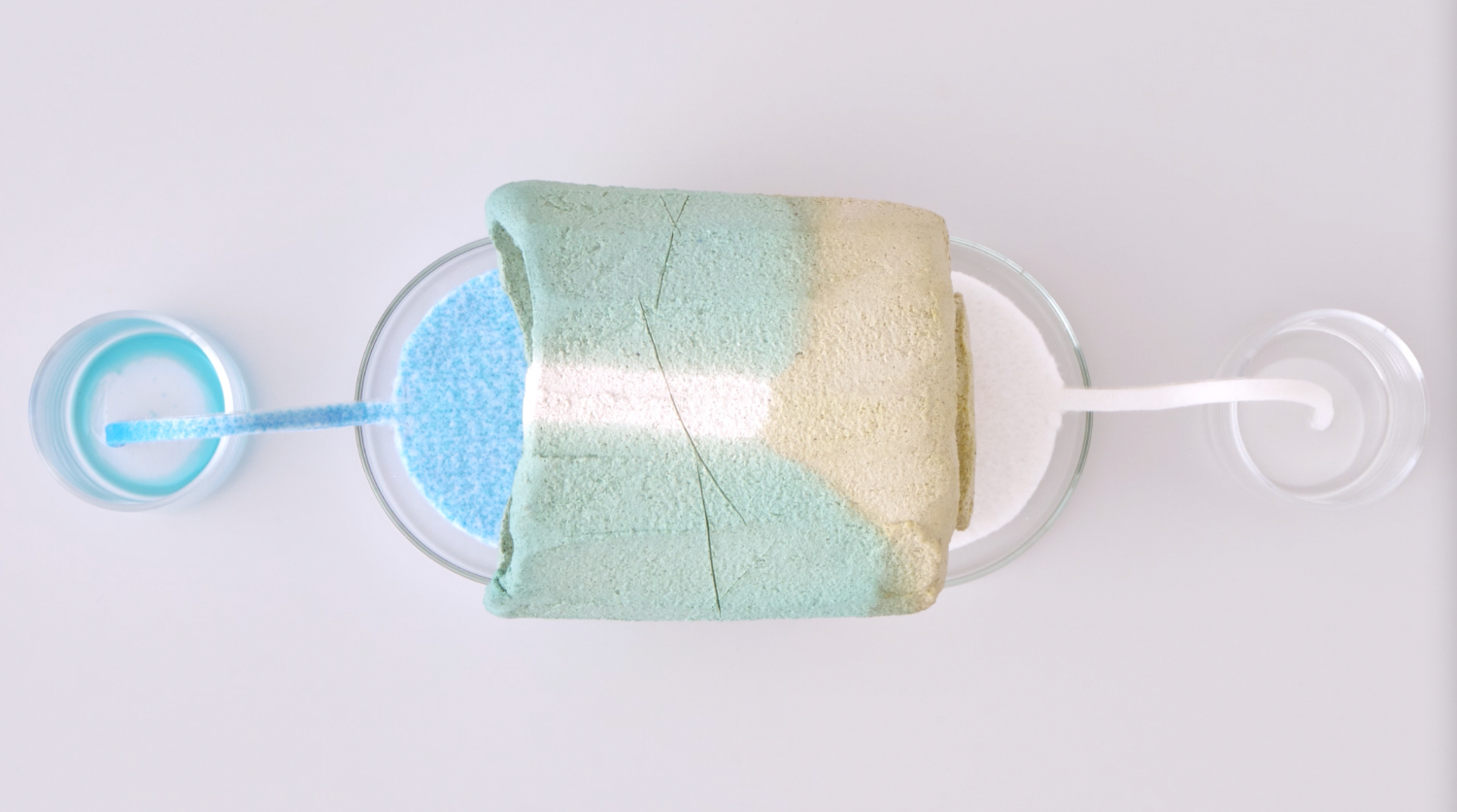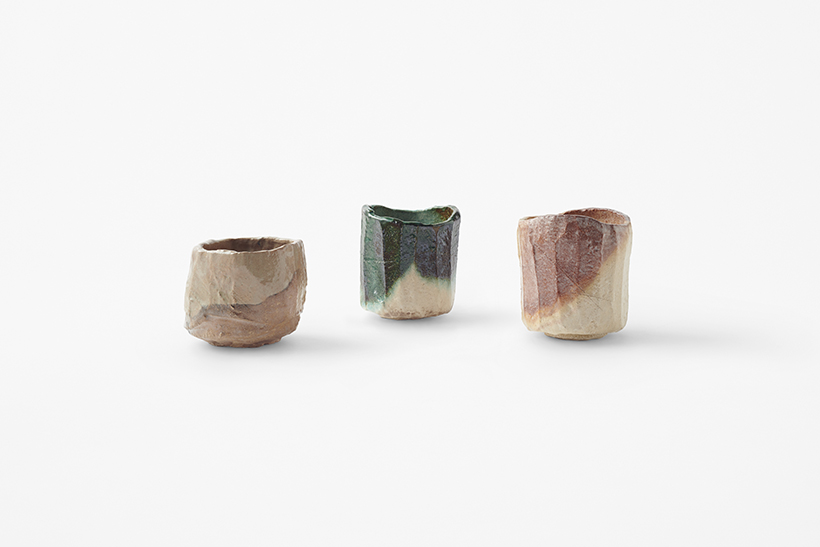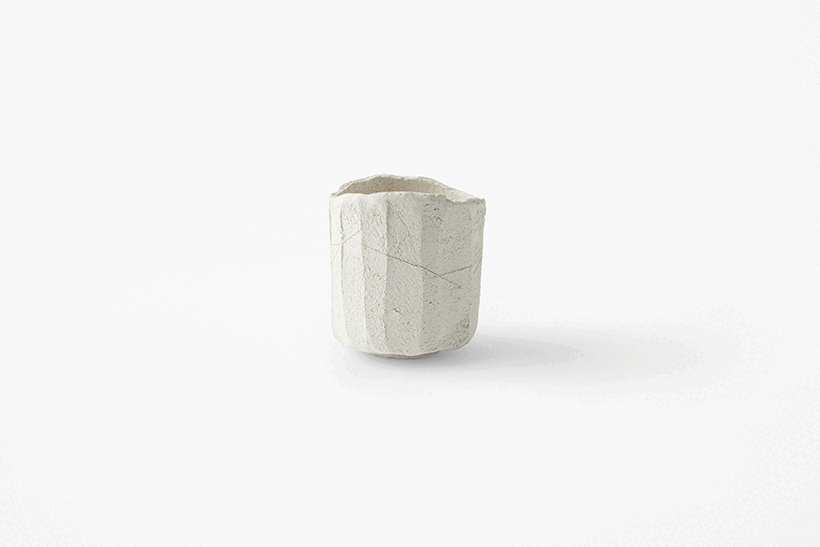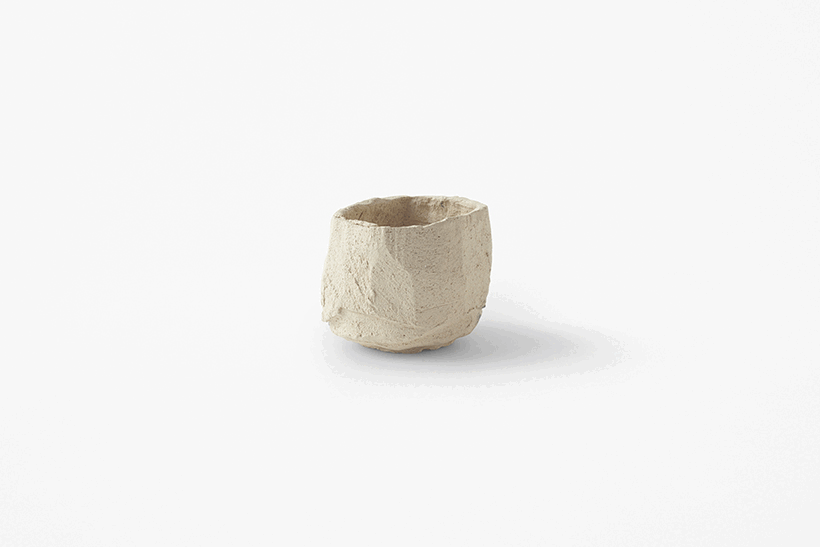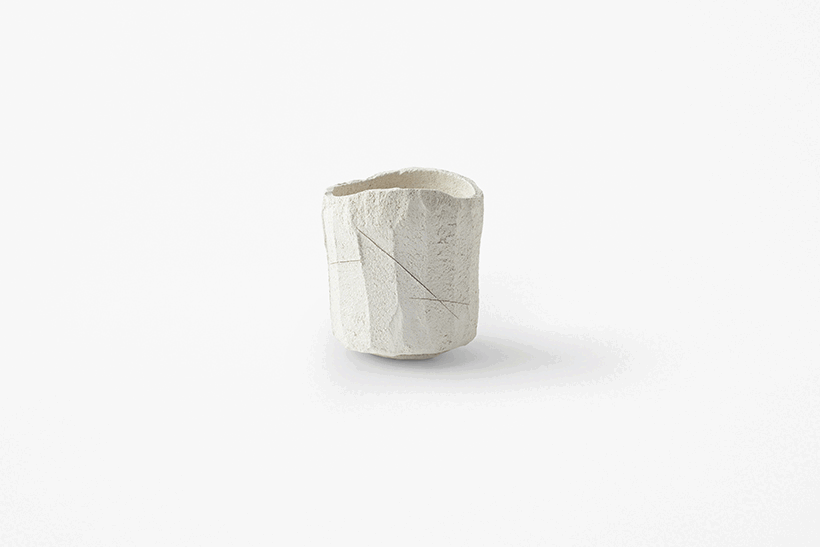junwan -redox-
The “Junwan (saturated bowl)” collection was unveiled at an exhibition held in Kyoto in 2022.
Its concept was to take advantage of the soft, porous clay and the characteristics of thickly molded Raku tea bowls so that the bowls draw patterns on their own surfaces when soaking up liquid. For the new design of Raku ware, bowls were finished by firing after absorbing an aqueous solution of metal ions and undergoing an oxidation-reduction reaction (=redox).
Three kinds of metal ion solutions were used: iron, copper, and silver. The bowls were laid on their sides and soaked with the metal ion solution from one side and vitamin C from the other. When the two solutions touch each other near the center of the bowl, a redox reaction occurs, in which electrons from the vitamin C are transferred to the metal ions.
This chemical reaction causes a banded color change. After drying, a transparent glaze was applied and the bowls were finished by oxidative firing. While the vitamin C burns and volatilizes, the metal ions and metal particles remain and combine with components of the clay and glaze to fix and develop their color.
Typically, in pottery, iron oxide and copper oxide are mixed with glaze to color a pot’s surface, but this collection attempted a new technique of putting metal components dissolved in water inside the walls of tea bowls. At the same time, the remnants of the struggle between the metallic components and vitamin C appear as fluctuations in color and pattern on the surface.
